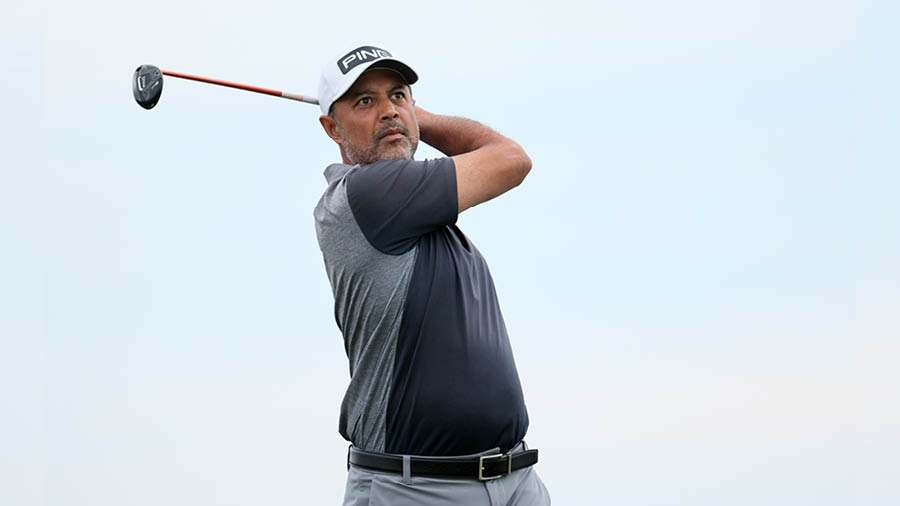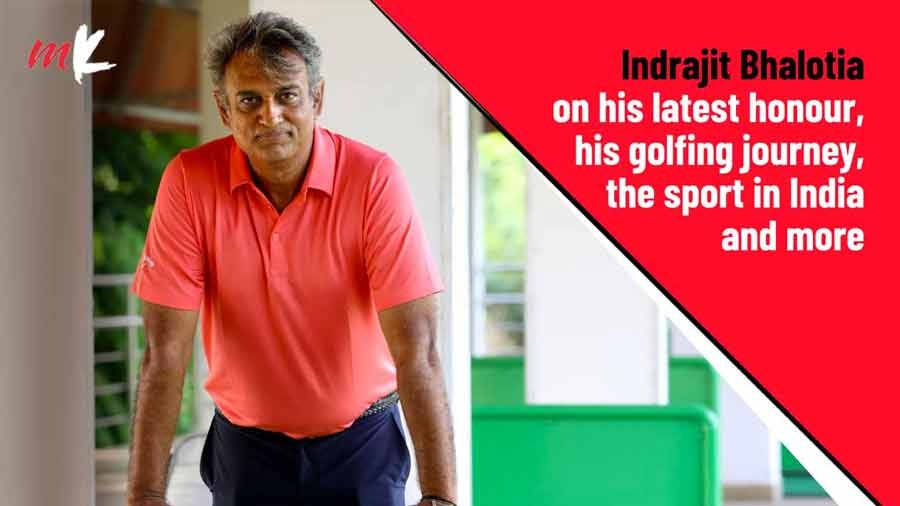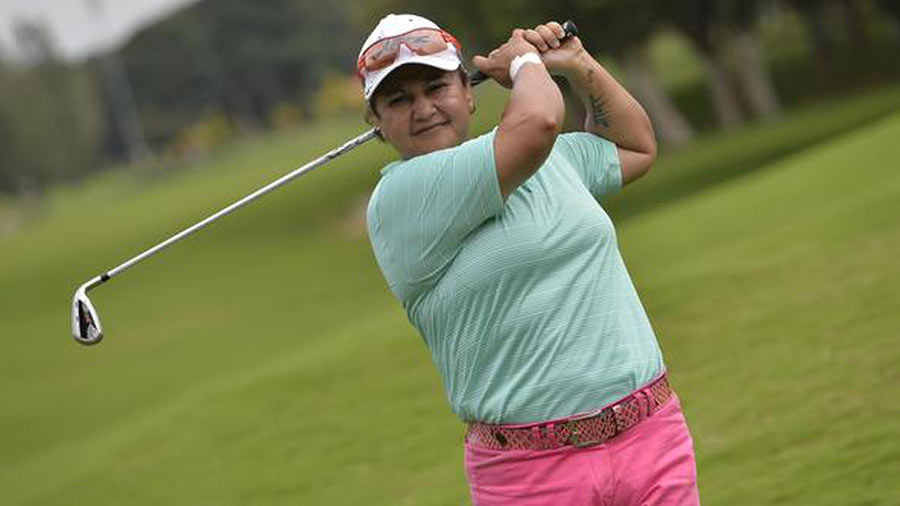Indian cricket changed when Kapil Dev lifted the 1983 men’s Cricket World Cup trophy on the balcony at Lord’s. Indian football had its golden hour when, coached by Syed Abdul Rahim, the country won gold in the 1951 and the 1962 Asian Games. Female boxing in India underwent a paradigm shift when Mary Kom struck bronze at the 2012 London Olympics. Four years earlier, Abhinav Bindra had shone the spotlight on shooting by winning India’s first ever individual gold medal. When it comes to golf, the honour of owning the most important moment in the sport for India goes to Arjun Atwal.
In August 2010, Atwal became the first Indian-born golfer to win on the PGA Tour, when he clinched the Wyndham Championship in North Carolina by a single stroke. According to his best friend and golf guru Indrajit Bhalotia, Atwal is the greatest golfer India has ever produced. With Atwal making his debut on the PGA Champions Tour at the Invited Celebrity Classic in Texas in late April, Bhalotia caught up with Atwal over a telephonic chat to discuss the present, the past and the future of the former’s golfing journey, with My Kolkata listening intently.
Edited excerpts from the conversation follow.
Indrajit Bhalotia (IB): How was your first experience on the Champions Tour?
Arjun Atwal (AA): It was good, even though I didn’t play all that great. I thought I was rather average that weekend. The worst part was my putting, which is usually pretty good. At the same time, I saw enough to feel encouraged that if I play decently, I’ll definitely have a chance on the Champions Tour.
IB: I remember when you played your first PGA Tour event. So many years later, you are a rookie once again. How does it feel to be a rookie on the Senior Tour?
AA: It feels pretty good, because, finally, I’m the youngest! Lately, I’ve been the oldest on the PGA Tour wherever I’ve been going. To see some of my old friends playing out there has been a pleasant surprise. Some of the guys, I thought, would be done playing by now, since they’re in their 60s. But they’re still out there. Makes me more motivated to keep going at 50. I’m really looking forward to playing more events on the Tour.
IB: Yes, and if you don’t beat Bernard Langer, who’s 65, I’ll be very upset!
AA: Yes, he’s unbelievable.
‘I’ve always wanted to win, no matter which Tour I’ve played on’
IB: So, what are your goals on the Champions Tour this year?
AA: The immediate goal is to win. I’ve always wanted to win, no matter which Tour I’ve played on. The first thing is to get my first win on the Tour, and I’ve been working pretty hard to that end. Right now, it’s the Tour that tells me where to play. Once I win, I can make my own calendar and play accordingly. After that, it’s about playing better and trying to be in contention for victories every week. Since there are no cuts on the Tour, there’s a bit less pressure.
IB: You’ll be taking part in the next Senior Major, the KitchenAid Senior PGA Championship in Texas, right?
AA: Yes, I’ll be there. It’s at the new headquarters of the PGA and it’s also a new golf course (Fields Ranch East). None of the seniors has played there yet. The course is designed by Gill Hanse, who’s pretty good at what he does. It has small greens, which I like, because it brings the short game into play. My short game is still pretty good because I haven’t lost my nerve.

Indrajit Bhalotia has known Atwal since the two were among the best young golfers not just in Kolkata but across India TT archives
IB: Yes, your short game is still quite strong, which I saw in Orlando (when Indrajit was in the US earlier this year). Most of the seniors seem to be struggling with that… Is this the first major on the Senior Tour?
AA: No, there was one earlier (Regions Tradition), which I didn’t get invited to. And there are three more to come (after KitchenAid). I should be playing at the British Open (the Senior Open Championship) in Wales. That should be fun.
IB: Yes, and you have a good chance of winning in Europe, as links courses suit your game better.
AA: Absolutely, that’s right.
IB: Will you continue playing on the PGA Tour alongside the Champions’ events?
AA: It depends. I really want to concentrate more on the Champions Tour. But, as of now, I have to divide my schedule between the two, since I’m not getting into every Champions Tour event and I want to keep playing regularly. Once I get my win on the Champions Tour, I want to focus on that. The PGA Tour is quite hard for me nowadays, with all these 20 and 25-year-olds hitting the ball so far.
‘I was nervous before the final hole at Wyndham, but I knew I had done it before’
IB: Going back to your PGA Tour win at the 2011 Wyndham Championship, what were your thoughts on that final hole? I remember watching it live at your parents’ place. Can you just talk us through the last hole?
AA: I figured that I might as well use a carrom shot and it almost went according to plan. The only problem was that it was a downhill chip and it didn’t quite run the way I thought it would. I left it some six or seven feet short of the hole and it became a pretty tough putt to make. I was nervous, but I knew I had done it before, in that I had made a fair few putts on the last hole to win before on the European Tour and the Asian Tour. That gave me the confidence to get the job done.
IB: I remember your reaction, it was typically you. You didn’t go crazy. It was more like you had to do it and you had done it. Moving on, what is your training routine nowadays, especially with all the wear and tear that your body has undergone?
AA: It’s not how it used to be when we were young. As you know, I like to practise and work on my skills more than I like to play. In my 20s and 30s, even in my 40s, I could practise the way I wanted to, putting in the hours I wanted to. But the last four or five years, things have slowed down, mostly due to the chronic pain in my back and knee. Nowadays, I practise based on how I feel. I don’t want to push my body too much, because I might have to take a few days off if I do that. I still wake up and do my full routine of warm-up and yoga, which will continue for as long as I play. Then, I go according to how my body feels. If I feel good, I’ll practise for three to four hours a day. If I don’t, then I’ll work on my short game, because it’s easier on the body instead of hitting driver after driver.
IB: A lot of youngsters these days hit a lot of balls, but it’s practice without purpose. What would you like to tell youngsters when it comes to having goals in mind during practice?
AA: Ever since we were kids, we always practised with a shot in mind. I don’t see that with a lot of the kids these days. Maybe it’s the equipment, maybe it’s the training regime they’re on. You can’t just hit balls and get better by practising for the sake of practising. My thing has always been to have a specific goal that I’m working on during a particular practice session. The game can be frustrating, and you don’t achieve that goal in a single day. It might take weeks, even months. But you’ve got to go after it.
‘How you build trust has a lot to do with your pre-shot routine’
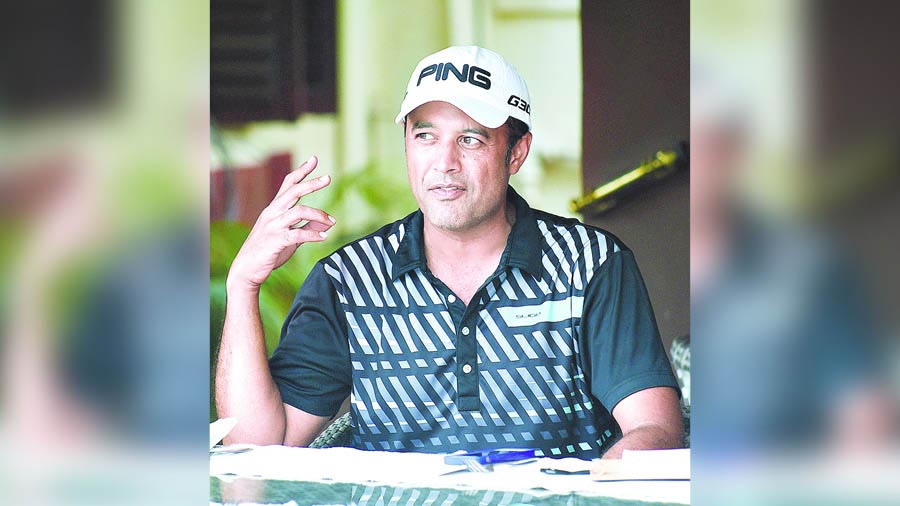
Atwal feels that players have to practise different kinds of swings based on the shots they want to play TT archives
IB: True, and I keep telling kids that you can practise as much as you want but you need to trust yourself when you’re on that final hole. I know this is a tough one, but how do you work on trusting yourself at those all-important moments?
AA: You build trust through practice but also through self-awareness. You can’t make the same swing for every shot. How you build trust has a lot to do with your pre-shot routine. Most kids have a general practice swing, but your swing should be decided by what shot you want to hit. That’s something I learnt from Tiger [Woods]. The pre-shot routine, or even the thought of what shot you want to hit, is how you build your trust. It doesn’t work everytime, but it works around 80 per cent of the time, and it’s definitely better than not having a pre-shot routine at all.
IB: It’s a sort of positive visualisation, right? Something that also mattered when you hit that final putt at Wyndham. But tell me how important yoga nidra has been in creating the sort of positive visualisation that you need.
AA: The first experiment I did with yoga nidra was during the GCM Open at the Delhi Golf Club in 1995. I had never won a pro tournament before that and I was trailing two of the biggest names, Basad Ali and Rohtas Singh, by six shots. After the third round, I was quite nervous. I went home and was feeling uneasy. I decided to do my yoga nidra that night before going off to sleep. I woke up the next morning feeling much calmer and peaceful. I ended up winning the tournament by four shots. It proved to me that yoga nidra works, and I do it to this day, along with my other meditation routines.
IB: Another question that is relevant for Indian youngsters is when should they think about moving to the US. Is there an optimal age, such as during college or maybe after college, when a player has turned pro?
AA: I think it’s upon the individual. You don’t have to come to the US to be a successful golfer. But if your goal is to play on the PGA Tour, then yes. You have to come here because you can’t prepare for that elsewhere, be it the greens, the balls, the short game or other factors. That’s when I’d recommend coming in for college and playing from the first year. The game is also getting younger. Right now, the average age on the PGA Tour is 24.
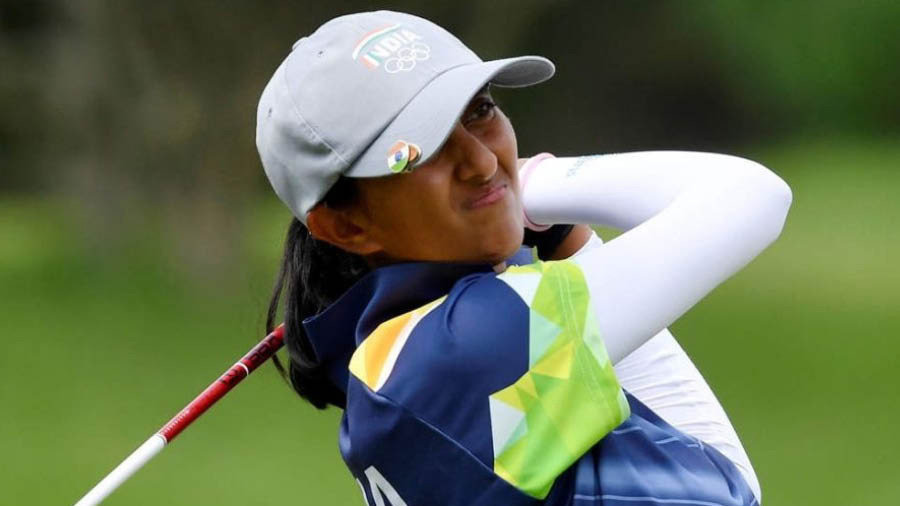
Atwal believes that Aditi Ashok has the game to back up her confidence TT archives
IB: Have you seen Aditi Ashok play?
AA: Yes, I have. I met her last year and she’s extremely confident, without being cocky. And she does have the game to back it up.
‘I remember my dad always telling me that one day I’ll play and win on the PGA Tour’
IB: Zooming out a bit, where do you see Indian golf today? Do you get time to follow up-and-coming Indian talent?
AA: I’m following a few of the Indian youngsters who are doing well, such as Manu Gandas and Yuvraj Singh Sandhu. There’s a lot of potential and the Indian Tour is also growing with time. But I wish more players focused on coming to the US. Why not dream big? Why not want to play with the best and against the best? Anirban Lahiri has done it. He came and played on the PGA Tour. I hope more and more people do so and that their parents don’t limit them. And also that kids don’t limit their goals. I remember my dad always telling me that one day I’ll play and win on the PGA Tour. At that time, as a kid, it went into my subconscious and I started believing in it and working harder towards that goal.
IB: Absolutely, I’ve seen the simplicity and positivity in your family, which definitely played its part in wherever you are today. Which reminds me, when did you last play at Tollygunge Club or the Royal Calcutta Golf Club (RCGC)? Growing up, we never saw the two courses as different, right? It was a matter of a few holes here and a few holes there. Chipping here, putting there and all that. Why don’t you share some of your memories of playing there over the years?
AA: I played and practised a little bit at the RCGC back in January, but haven’t had the chance to play at Tolly so far this year. As far as playing at these two courses goes, it’s the most fun I’ve ever had. Playing with you, Simi [Mehra] and the rest, and against Lakshman [Singh] and [Rajeev] Mohta…
IB: We used to always beat them, even though they felt they could beat us. We beat them multiple times and eventually felt bad (laughs)...
AA: It was a lot of fun back then because we had the golf courses entirely to ourselves.
‘Tiger Woods is a one-in-a-billion athlete’
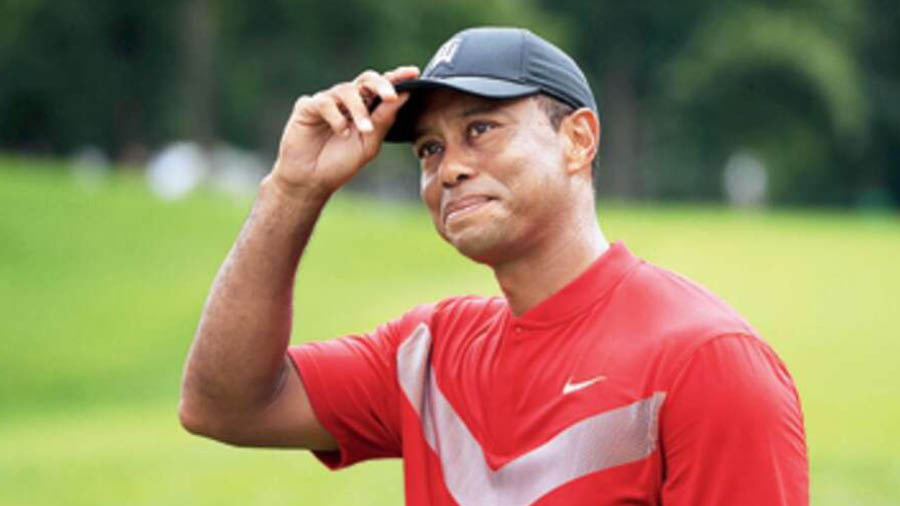
Atwal admits that he has never seen anyone dominate a sport the way Tiger Woods has dominated golf TT archives
IB: On a different note, you have trained and played so much with Tiger Woods. Do you think Tiger is going to come back and win again?
AA: Right now, I don’t think he knows himself. He does have the desire to return but all the surgeries have taken a huge toll on his body.
IB: What is that one thing that Tiger had that made him what he is?
AA: He’s a one-in-a-billion athlete. I haven't seen anybody in their sport be that good. Even at my best, I knew I couldn’t beat him. You can’t put into words what kind of talent and determination he had. He knew that he had the “it” factor and he worked on perfecting every aspect of his game to the point where he had no weaknesses left. He put in an equal amount of work to match his talent and maximised his impact.
‘If we can invest in the growth of golf properly, it can probably give us more in return than cricket’

Atwal wants to make golf more accessible to youngsters in India, but will need the support of the government and corporates to do so Getty Images
IB: Finally, you have done so much for Indian golf. I don’t think you have got your due in India. Perhaps because you haven’t been as visible in the country due to your playing in the US. But what would you like to do for Indian golf in the time to come, even if you don’t end up playing a lot in India?
AA: I want to grow the game for junior golfers. I want anybody who wants to play golf to have access to the game. For that to happen, I’d need more funding from the government, the corporates and other stakeholders. If there’s support behind it, we can create world-beaters given the population and the hand-and-eye coordination Indians have. If we can invest in the growth of golf properly, it can probably give us more in return than cricket.
